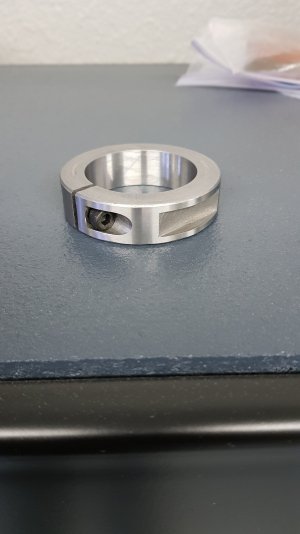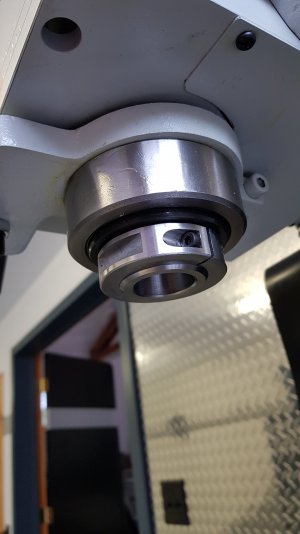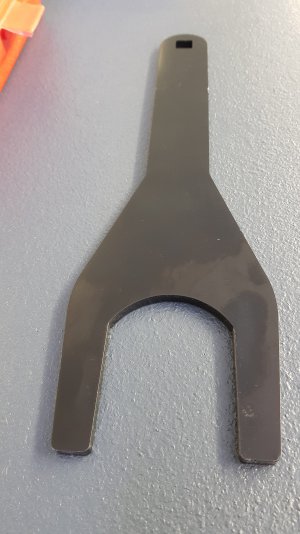Ariel,
I think your decision not to implement the Belleville washer type is a good one. Those systems are not true PDB - they only push the drawbar down to release the clamping force of a TTS collet, and do not actually rotate the drawbar. I actually think of those systems as a "collet closing" setup similar to what you'd find with a 5C collet closer on a lathe. Since they don't actually rotate the drawbar, the device attached to the end of the drawbar is never released. Obviously it works with the TTS collet chuck, but makes no sense to use with varying diameter R8 collets or other R8 tooling.
I think you're going to end up designing your own PDB for the 833. Everything I've seen thus far is for use with the TTS collet chuck. I helped two friends with RF-45's implement PDB's for their machines, but of which used a butterfly-type pneumatic impact driver, and a hand lever to lower the driver onto the drawbar head and actuate the air to the driver with a rotation action.
I think you would be surprised at how little downward force is required to cause the R8 collet to be driven down/out when using a pneumatic impact driver as the rotational element. It hammers away on the hex-head and this helps to dislodge the collet. I'm not saying you don't nee ANY downward force, because you do, but it is far less than you might suspect. Whether a cordless impact driver jolting/dislodging forces are on par with a pneumatic butterfly type driver is doubtful in my mind, but who knows? In the process of coming up with these PDB's for the RF-45s, I looked at all kind of implementations.
Obviously, some form of vertical movement is required to pull the twisting device (impact driver) down onto the head of the drawbar. Lots of designs I looked at involve the operator pulling the impact driver down while simultaneously triggering the impact driver switch.
This is one such design where the lever that lowers the impact driver is also used to trigger the impact driver in either direction.
This video illustrates just how little downward force is required when using a pneumatic impact driver.
Here's another version.
This is an example (go to 29:55 to see it demonstrated) of a design where two levers are used; one to lower and lock the driver in position, another lever to toggle the impact driver either direction.
The design Colin (CompEdgeX) used I like because it is so low-profile vertically, and is activated with the press of a buttton. Yes, it does use a pneumatic linear actuator to pull the unit downward instead of pushing it from above which would double the height of the complete unit. That design originated with Stan Zinkowski at Bar Z, and he explains the use of the air cylinder and how it's configured in
this video and in
this addendum. Ray Canillia has a four-part video series of his implementation of this same design you can
find here.
This is another (skip to 2:00) similar design but uses two pneumatic linear actuators.
The Maxi Torque-Rite and the Kurt PDBs do not use a conventional pneumatic linear actuator to move the driver up/down. The driver is contained inside a cylinder that acts as a piston inside the main housing, and air is used to push the cylinder down and a spring causes it to return.
This video shows the guts of the Kurt, and the Maxi Torque-Rite uses the same method to lower the impact driver. Both the Kurt and Maxi Torque-RIte imploy a hardened splined-type head on the drawbar to improve torque and lessen the possibility of hex-head deformation.
Hope this helps.




